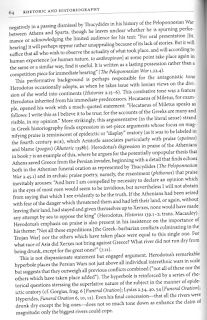Tuesday, January 30, 2018
Wednesday, January 24, 2018
Tuesday, January 23, 2018
Sunday, January 21, 2018
Friday, January 19, 2018
Wednesday, January 17, 2018
Monday, January 15, 2018
Saturday, January 13, 2018
Friday, January 12, 2018
Monday, January 8, 2018
Sunday, January 7, 2018
Friday, January 5, 2018
Maria Sanford, the First Woman Professor in Minnesota, and a Professor of Rhetoric, Speaks in Atlanta
Maria Sanford was the first woman to hold a professorship in Minnesota. She was a Professor of Rhetoric on the Twin Cities campus, and while she didn't make a mark "on the discipline," she made a real mark on Minnesota's political and educational culture. These letters address a speech she gave in Atlanta, and they are fascinating.
Wikipedia tells me this about the church:
First Congregational Church (First Church; United Church of Christ) is a United Church of Christ church located in downtown Atlanta at the corner of Courtland Street and John Wesley Dobbs Avenue (formerly Houston Street). It is notable for being the favored church of the city's black elite including Alonzo Herndon and Andrew Young, for its famous minister Henry H. Proctor, and for President Taft having visited in 1898.[2]
The church is the second-oldest African-American Congregational Church in the United States. The American Missionary Association (AMA) established the Storrs School in Atlanta. The school served as a center for social services, education, and worship for newly freed blacks. Worshipers at the school's services petitioned for a church of their own. As a result, in May 1867 a Congregational Church was organized,[3] and the AMA donated the land.
The church was never formally segregated but had become mostly black by 1892. The current building is the second church, built on the site of the original one in 1908.[4]
There is a discussion of black women and their purity, the relative dangerousness of white men as opposed to black men. It's... The context, without her letters or the text of her speech... I need help here.
Thursday, January 4, 2018
Ways of Incorporating Possessions into the Extended Self
From:
Possessions and the Extended Self
Author(s): Russell W. Belk
Source: Journal of Consumer Research, Vol. 15, No. 2 (Sep., 1988), pp. 139-168
Sartre (1943) suggests three primary ways through which we learn to regard an object as a part of self. One way is through appropriating or controlling an object for our own personal use; this view is similar to McClelland's (1951) hypotheses about power and control. Sartre also holds that we can appropriate in- tangible or nonownable objects by overcoming, con- quering, or mastering them. For instance, a mountain climber in reaching a peak has asserted control of the mountain and the panorama it affords. Similarly, it is only through learning to ride a first bicycle, manipu- lating a new computer system, driving a first car, or successfully negotiating rapids in a new kayak that these objects really become parts of the extended self…
Sartre also sees giving possessions to others as a means of extending self-a special form of control. A gift continues to be associated with the giver so that the giver's identity is extended to include the recipi- ent.
Possessions and the Extended Self
Author(s): Russell W. Belk
Source: Journal of Consumer Research, Vol. 15, No. 2 (Sep., 1988), pp. 139-168
Sartre (1943) suggests three primary ways through which we learn to regard an object as a part of self. One way is through appropriating or controlling an object for our own personal use; this view is similar to McClelland's (1951) hypotheses about power and control. Sartre also holds that we can appropriate in- tangible or nonownable objects by overcoming, con- quering, or mastering them. For instance, a mountain climber in reaching a peak has asserted control of the mountain and the panorama it affords. Similarly, it is only through learning to ride a first bicycle, manipu- lating a new computer system, driving a first car, or successfully negotiating rapids in a new kayak that these objects really become parts of the extended self…
Sartre also sees giving possessions to others as a means of extending self-a special form of control. A gift continues to be associated with the giver so that the giver's identity is extended to include the recipi- ent.
Social power and status as reasons to own personal possessions
From:
During preretirement adulthood, Csikszentmihalyi and Rochberg-Halton (1981) found that emphasis shifts from defining oneself by what one does to de- fining self through what one has. Furby (1978) found that 40- to 50-year-olds are the most likely of all age groups to cite social power and status as reasons to own personal possessions. Csikszentmihalyi (1982, pp. 5-6) explains:
Possessions and the Extended Self
Author(s): Russell W. Belk
Source: Journal of Consumer Research, Vol. 15, No. 2 (Sep., 1988), pp. 139-168
Author(s): Russell W. Belk
Source: Journal of Consumer Research, Vol. 15, No. 2 (Sep., 1988), pp. 139-168
A person who owns a nice home, a new car, good furni- ture, the latest appliances, is recognized by others as having passed the test of personhood in our society . . . the objects we possess and consume are . . . wanted because . . . they tell us things about ourselves that we need to hear in order to keep our selves from falling apart. This information includes the social rec- ognition that follows upon the display of status sym- bols, but it includes also the much more private feed- back provided by special household objects that objec- tify a person's past, present, and future, as well as his or her close relationships.
Monday, January 1, 2018
Subscribe to:
Comments (Atom)






























